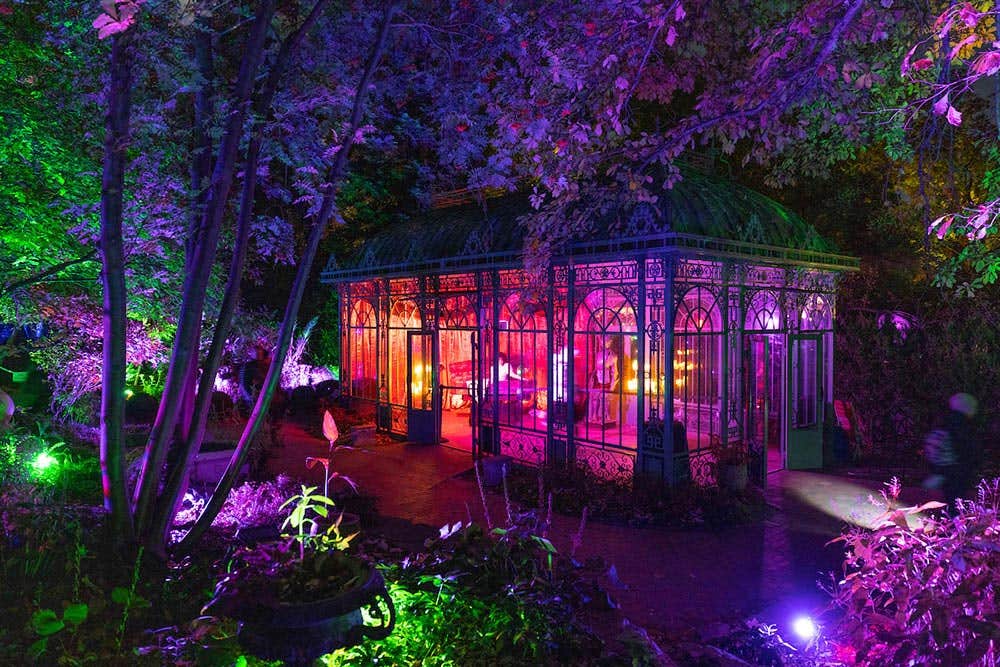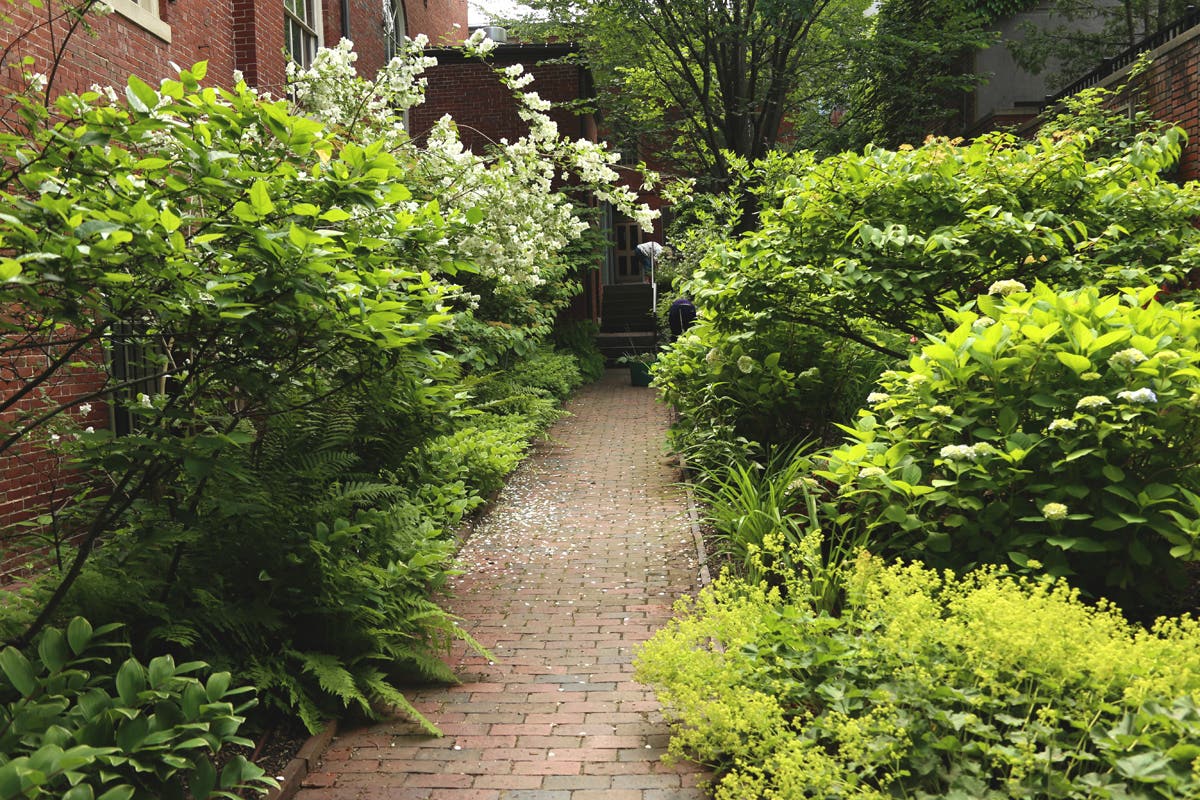Celebrate Trees at The Morton Arboretum
Located just outside of Chicago, the Morton Arboretum showcases the beauty of trees year-round
The history behind the Morton Arboretum in Illinois
The Morton Arboretum shares a name with a very famous company that produces a product you likely have in your pantry right now – and no, it’s not a coincidence. Joy Morton founded the Morton Salt Company in Chicago in 1885 and went on to establish The Morton Arboretum in 1922. While this may seem like a random career change, Joy’s connection to trees existed long before he got into the salt business. Joy was the eldest son of Julius Sterling Morton, a Nebraska newspaper editor and politician who served as President Grover Cleveland's secretary of agriculture and was the co-founder of Arbor Day.
It is said that the Morton family motto was “Plant Trees,” and Joy took that adage very seriously in his later life. It started in 1921, when Joy began the process of transforming the property around his country estate in Lisle, Illinois, into an arboretum, and he brought on the best of the best to execute his vision. Dr. Charles Sprague Sargent, director of the Arnold Arboretum of Harvard University, visited Lisle several times and had a substantial influence in the shaping of Morton Arboretum. The Mortons visited important European gardens and hired landscape architect O.C. Simonds based on Sargent’s advice, as well as received herbarium specimens, books and living plants from the famed botanist.
The Morton Arboretum was officially established on December 14, 1922, and when Joy died in 1934, the arboretum consisted of 735 acres. Seven of Joy’s family members and two Morton Salt executives continued Joy’s goals as the Board of Trustees – especially his daughter Jean, who served as the chair of the board for 19 years. They maintained the mission to “Plant Trees,” and helped the institution become the hub of education, research and tree appreciation that it is today.
Related article: Have a Festive Fall at Denver Botanic Gardens
About Morton Arboretum:
- Location: 4100 Illinois Route 53, Lisle, Illinois
- Size: 1,700 acres
- When to visit: Open year-round, 9:00 A.M. to sunset
Discover the Morton Arboretum’s Late-Season Magic
After the buzz of the busy summer months, the activity at many botanical gardens begins to slow down as days get colder and darker. However, the color and interest only increase at arboretums after summer flowers fade, and the displays at Morton are no different. The arboretum’s vast collections of woody plants are lush and inviting during spring and summer, but erupt into successions of fiery reds, oranges and yellows throughout the months of fall.
Hickories, beech, oaks, sumacs, witch-hazels and sugar maple are just a few of the species that produce the most colorful foliage at Morton during this time of year. And to ensure that your visit (or visits) coincide with the peak fall color you’re looking to see, you can plan strategically with the help of their weekly Fall Color Report.
Illumination: Tree Lights at the Morton Arboretum
But the beautiful displays don’t stop when the last of the autumn color has fallen. The Morton Arboretum becomes a winter wonderland, where well-maintained pathways allow you to wander through snow- and ice-covered branches. If you’re looking for a winter garden show with a bit more excitement, you’ll want to visit after nightfall to enjoy Illumination: Tree Lights at The Morton Arboretum.
Regularly landing on USA TODAY’s list of the Top 10 Best Botanical Garden Holiday Lights, it’s a display that makes the trees the real stars of the show. Rather than using lights to create fantastical shapes or fun characters in the garden, lights and music are used throughout the 50-acre display to illuminate the trees in bright and dazzling colors that allow you to appreciate their unique shapes and forms in a completely new way.
5 Signature Trees to Spot at Morton Arboretum
Trees are not the only plants you’ll find at The Morton Arboretum, but they are certainly the main attraction. As “The Champion of Trees,” the arboretum also serves a center for education and scientific research that focuses on how to sustain these vital species. Because this century-old institution has always maintained a mission of conservation, their collections consist of countless trees from around the world that range from common garden favorites to rare specimens. The following five are just some of the trees that have a big impact in a garden full of plant giants.
1. Ginkgo
“The Arboretum is a ginkgo, and a ginkgo it shall remain.” – Joy Morton
To appreciate the essence of the arboretum that Joy Morton first imagined over a century ago, look no further than one of his favorite trees: the ginkgo (Ginkgo biloba). Ginkgo biloba is the only remaining species in the genus Ginkgo, and the only genus in the family Ginkgoaceae, giving these plants an extra layer of mystique.
Loved for their enduring beauty, longevity and ancient history, various forms of this “living fossil” can be found throughout Morton. A total of 15 cultivars and 77 specimens have been planted since 1922, including the weeping form (G. biloba ‘Pendula‘), upright form (G. biloba ‘Princeton Sentry‘) and a cultivar with brighter golden fall colors called ‘Autumn Gold’ (G. biloba ‘Autumn Gold‘).
2. Morton elm cultivars
American elm trees (Ulmus americana) once lined residential streets across the country, but this majestic species was nearly wiped out after the proliferation of Dutch elm disease that started in the 1930s. The Elm Collection and breeding program at Morton has played an important role in responding to this devastation.
The collection began in 1926, covering more than 5 acres and made up of more than 75 different kinds of trees. Some of the most notable include the five disease-resistant cultivars that were created through breeding the many rare Asian elm species at the arboretum and have enabled the elm trees’ return to our landscapes. These cultivars are the Accolade™ elm (Ulmus ‘Morton’), the Triumph™ elm (U. ‘Morton Glossy’), the Vanguard™ elm (U. ‘Morton Plainsman’), the Danada Charm™ elm, (U. ‘Morton Red Tip’) and the Commendation™ elm (U. ‘Morton Stalwart’).
Related article: How to Pick the Right Plants to Showcase Your Trees
3. White oak
In 2009, Botanic Gardens Conservation International determined that The Morton Arboretum Oak Collection is the most significant botanic garden collection of oaks among 198 botanical institutions worldwide. It features 98 unique taxa and over 468 plants from North America, Asia and Europe. Distributed across 12 acres on a site that was originally an oak-dominated forest before European settlement, many mature specimens remain as evidence of the original landscape and contribute to the extensive number of native species in the collection. Of the 17 out of 21 Illinois native oaks in the collection, one of the most instantly recognizable and regionally significant is the white oak (Quercus alba). A symbol of Midwestern history and landscape, it is also the Illinois state tree and supports a wide variety of moths, butterflies, small mammals and songbirds.
4. Weeping European beech
Some of the most striking trees that can be found at Morton – particularly during the fall foliage season – are among their Beech Collection. Beech trees are stunning all year round thanks to their smooth gray bark, but they come alive in autumn when their leaves shift to a lovely golden-yellow. A variety of Oriental beech (Fagus orientalis), American beech (F. grandifolia) and European beech (F. sylvatica) can be found in the collection at Morton, but the weeping European beech (F. sylvatica ‘Pendula’) might be the most notable in the bunch. A graceful cascade of twisting branches and green foliage form shady rooms in the summer, and that iconic silvery gray bark can be enjoyed through the winter.
5. Fox Valley™ river birch
Another tree family often recognized for their interesting bark are birches (which are also closely related to beech trees). The Birch Collection is one of the largest on the arboretum’s west side, containing almost 230 plants and representing nearly 63 different kinds of trees. This group encompasses a diverse area at Morton, including a flood plain, Bobolink Meadow and the edge of a pine woodland. However, you shouldn’t be able to miss the large group of river birches (Betula nigra) that are able to tolerate the flood plain and are a focal point of the collection. The Fox Valley™ cultivar (Betula nigra ‘Little King’) is particularly noteworthy because of its perfect round shape and very attractive peeling bark.







